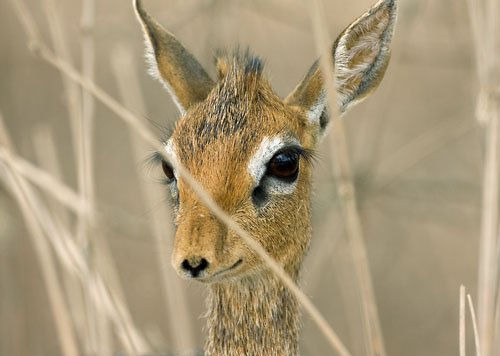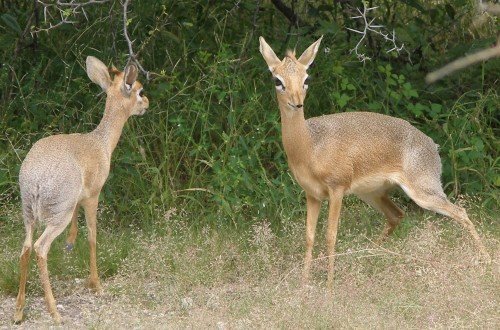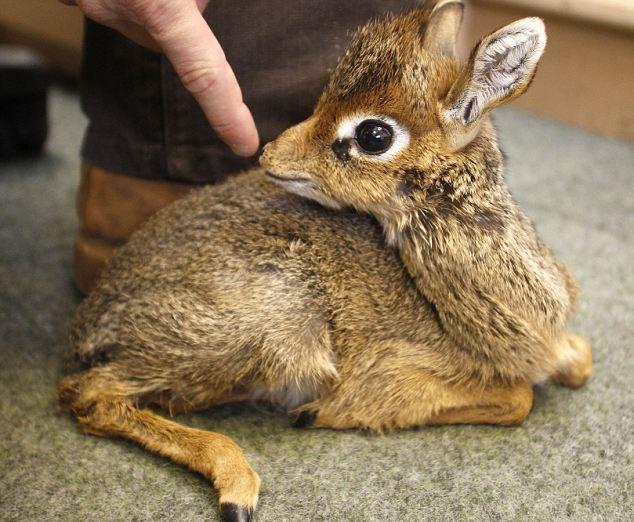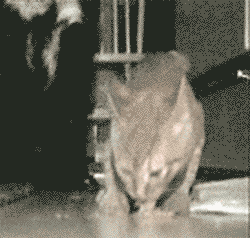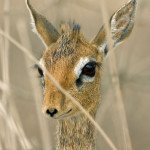Kirk’s Dik Dik
Twitching nose and tiny hooves – The Dik-Dik
Weighing a mere 5 kg, the Kirk’s Dikdik is one of the smallest members of the antelope tribe. Its most distinctive features are its huge eyes and trunk-like snout with down-pointing nostrils. This flexible nose is an adaptation to a semi-arid environment, serving as a radiator to cool blood which flows through the nasal passages to the brain. This evolutionary device allows the dik-dik to be completely independent of surface water, for it gets all its moisture requirements from its leafy diet.
Territorial Borders
In common with all dwarf antelope, the dik-dik is a browser rather than a grazer, favouring dry acacia-dominated scrubland. Pairs are strictly monogamous and defend a territory of between 0.3 and 35 hectares. The borders of the territory are rigorously demarcated by a number of conspicuous dung middens, and by scent-marking prominent twigs with a paste from the antelope’s preorbital glands.
Sounding the Alarm
Male dik-dik make a loud whistle when they are disturbed or sense danger. This alarm call sends females and young scurrying for cover – often into an impenetrable Sanseivera thicket. When danger has passed, pairs come together to rub noses and scent-mark their territorial borders.
Many Predators
Dikdik are active during the night and day, but usually keep to dense cover at midday. They are particularly active on moonlit nights. Among their predators are Caracal, Leopard, Rock Python and Martial Eagle. Outside of protected areas, feral dogs pose a major threat.
Kirk’s Dik-dik is abundant throughout the Serengeti-Mara scrublands and also in the Lake Manyara National Park. This little antelope is very common in the dry landscapes west of the Ngorongoro Crater, particularly at Oldupai Gorge.
